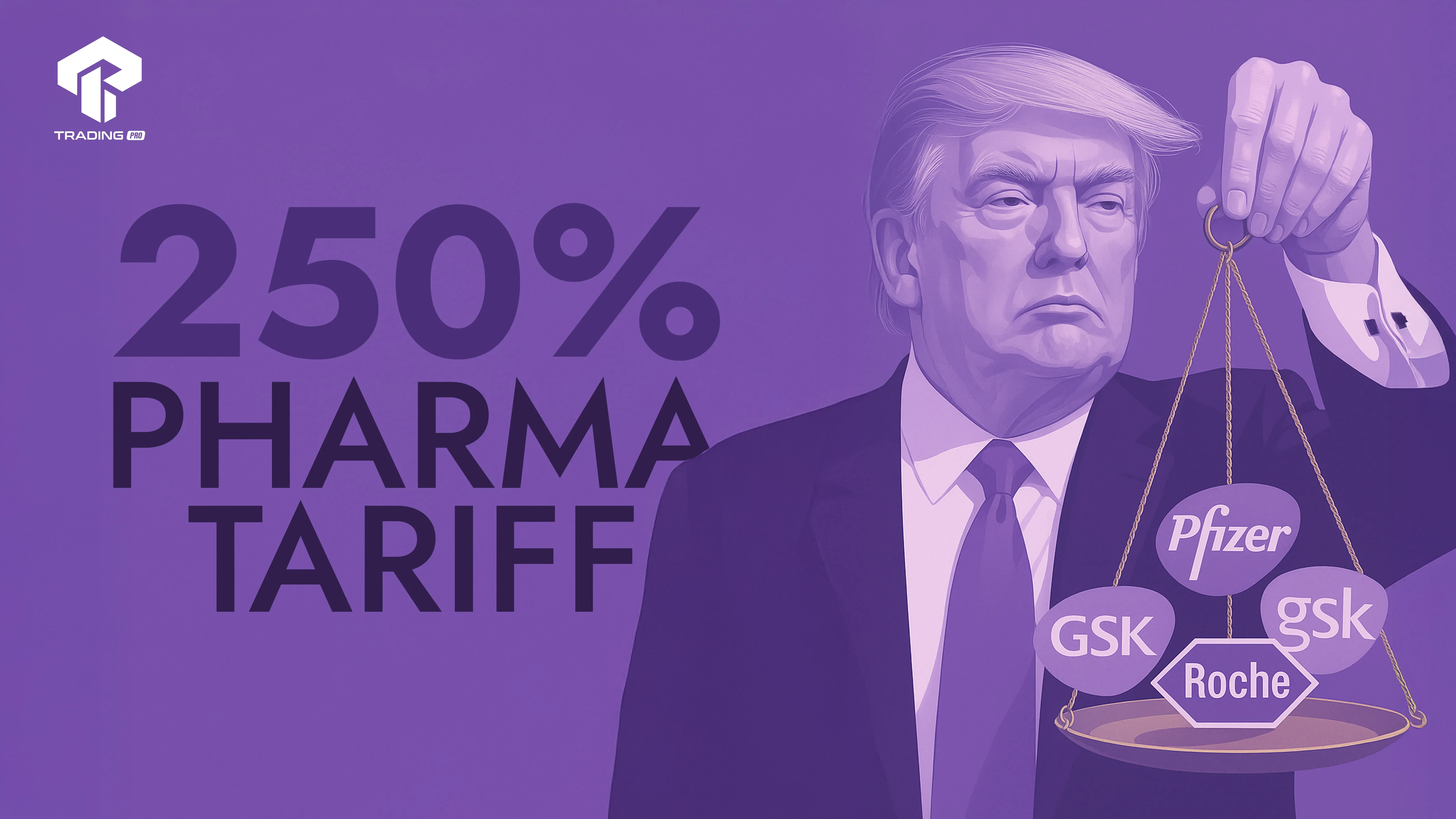- Published on: 2025-08-05 10:54:00
Trump to Raise Pharma Tariffs to 250%: Market Fallout

On August 5, 2025, President Donald Trump reignited global trade tension with a sharp move: the introduction of escalating tariffs on pharmaceutical imports into the United States. The policy begins with a modest rate, but Trump made clear the intent — a climb to 150% within 18 months, and eventually up to 250% for pharmaceutical products sourced from foreign manufacturers.
The goal, according to the President, is simple but aggressive: force drug companies to manufacture in the U.S. or face punitive duties. Framed as a national security initiative, the plan leverages Section 232 of trade law — the same mechanism previously used to justify steel and aluminum tariffs — and signals a profound shift in how America views drug supply chains.
But what does this mean for the markets, manufacturers, and ultimately, consumers?
Market Reaction: Shockwaves Across Global Pharma
Almost instantly, global pharmaceutical stocks reacted. Major Indian drugmakers like Sun Pharma, Cipla, Dr. Reddy’s, and Lupin saw share prices drop as investors feared reduced U.S. demand or operational cost surges. European players like AstraZeneca and Sanofi also came under pressure, despite some having existing U.S. operations.
Meanwhile, some U.S.-based pharma firms experienced mixed outcomes. Companies like Eli Lilly and Pfizer initially saw declines, followed by a rebound as investors bet they might gain market share if foreign competition is pushed out.
Beyond equities, there was broader uncertainty in currency and bond markets as traders absorbed the possibility of rising drug prices, retaliatory tariffs, and fresh legal challenges.
The Real-World Impact: Drug Prices, Supply Chains & Legal Hurdles
The most immediate concern is drug affordability. If tariffs reach even half the proposed ceiling, U.S. drug prices — especially for generics — could spike. Many of these medications are imported from India and Europe, where margins are already tight. A sudden 150% or 250% duty would almost certainly lead to shortages or pricing hikes unless U.S. capacity can quickly scale.
Pharmaceutical companies now face intense pressure to diversify or relocate production to American soil. Several multinationals have already begun announcing new U.S. investments, but these facilities take years to come online. In the interim, uncertainty will weigh on investor sentiment.
Legally, the plan isn’t bulletproof. Tariffs under Section 232 have survived court challenges before, but experts believe targeting medicines — a humanitarian commodity — could trigger stronger backlash from domestic lawmakers, global trading partners, and possibly the World Trade Organization.
What to Watch in the Weeks Ahead
- Tariff Implementation Details
The White House hasn’t specified when the first round of tariffs will take effect or which products will be targeted. Those details will dictate how severe and immediate the impact is. - Commerce Department's Final Report
The Section 232 investigation is ongoing. Its conclusions will form the legal backbone of the tariff framework — and may leave room for industry exemptions or delays. - Global Trade Response
Countries like India, Australia, and the European Union have voiced concerns. Watch for diplomatic countermeasures, trade disputes, or retaliation if pharma exports are hit hard. - Corporate Restructuring
Expect a wave of announcements from global drugmakers about new U.S. manufacturing plans, reshoring initiatives, or strategic M&A activity targeting American capacity. - Legal and Political Pushback
Lawsuits, lobbying campaigns, and congressional hearings are almost inevitable. If public sentiment turns against rising drug prices, the administration may face internal resistance to full implementation.
Conclusion: Turning Point or Trade Trap?
Trump’s pharma tariff strategy represents one of the boldest trade interventions in recent U.S. history. While intended to promote domestic manufacturing and secure supply chains, it also opens the door to price hikes, market volatility, and global backlash. For investors and businesses alike, vigilance is now critical.
This is more than a headline — it’s a structural shift. Markets will be watching every policy rollout, earnings report, and political challenge that follows.
Stay Ahead of the Curve
For real-time coverage, expert insights, and deep dives on how Trump’s tariff policies are shaping the global pharmaceutical landscape:
Follow TradingPRO on X (Twitter), LinkedIn, Instagram, and Telegram.





